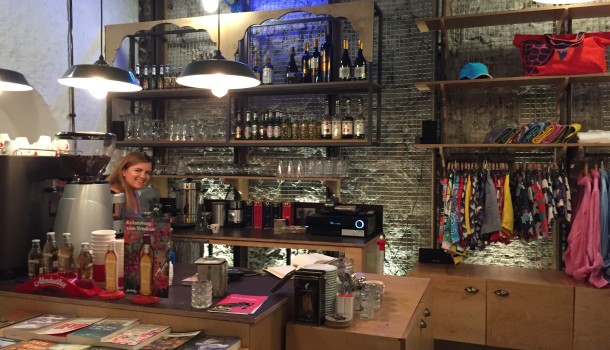As retailers emerge, grow and change, so does the competition for attracting customers and creating a loyal following. Shopping centers also need to be competitive and need to be in sync with consumer shopping trends, so leasing and property management teams need to stay in touch and even a step ahead of the curve. To discuss how analyzing consumer trends can help a shopping center enhance customers’ shopping experience and become its community’s go-to retail destination, PLACES Magazine sat down with Arthur B. Butterfield, Regional Vice President at Madison Marquette.
In the past, the suburban mall attracted shoppers with anchors such as mid-market department stores or big box retailers. How have traditional malls evolved to be more competitive and capture consumer attention?
AB: The modern mall has been pronounced dead many times recently, but what’s really happening is more of a metamorphosis. Department stores have continued to downsize and close, so there is space available to developers to add more lifestyle and entertainment options to enhance centers. Today, traditional malls are adding live entertainment and a variety of dining options to transform their spaces into a gathering place for family and friends. A good example of a concept that incorporates retail, dining and entertainment is the Tommy Bahama “compound,” which offers both lifestyle retail,dining and live music. Many retailers are shifting to an entire lifestyle presentation that includes all sorts of soft and hard goods as well as entertainment and dining. Another brand that exemplifies this lifestyle goods presentation is Anthropologie. Developers that see this shift in retail and translate it into action are evolving their shopping centers to be a more lifestyle-inclusive “place.”Essentially, the transformation is starting with the retailers and moving up to the shopping center developers.
Over the past 12 months, the trend for shopping centers to become lifestyle hubs has been on the rise. How is Madison Marquette transforming its properties from retail-only to community destinations?
AB: Madison Marquette’s Wharf development in Washington, DC, is a good example of this. The Wharf combines hospitality [hotels], office space, residential condos and luxury apartments, and entertainment. It is creating a new district within “The District.”Lifestyle is the focus. The project caters to the people that both live there and visit with tons of great food options, an entertainment venue, and services like a grocery store, a drug store, a dry cleaner and a curated selection of retail soft goods. As it expands to become more of a lifestyle center, The Wharf provides a perfect model of where shopping centers are headed.
How is the national franchising trend benefiting shopping centers?
AB: People are somewhat “bored” with the same retail stores opening at most centers and sometimes within blocks of each other. Many of these retailers, like Gap, are closing locations because they expanded into too many locations, which diluted what originally made them unique. Franchising, however, puts the local businessperson on the front lines of customer service and fashion trends. For example, I recently visited a 700-square-footmen’s store in Fredrick, Maryland, that carried clothing you can’t find anywhere else; the store is in an historic district with a buildout that is “industrial chic.” Incredibly, the retailer also offered its customers a barbershop upstairs as part of its “lifestyle” presentation. It was a great example of what the “new urbanism” has done to reinvigorate downtown areas. It is that contentedness between retailer and consumer that has created a sense of place and a shopping experience that traditional malls don’t offer.
While consumer preferences differ across the country, are there any universal tenant choices that make sense whether in California, Texas or New York?
AB: The “ath-leisure” trend in fashion works in shopping centers across the country. Ath-leisure is clothing designed for yoga or the gym, but it can be worn outside of those environments as fashion, or at least it has become fashion. Retailer examples include lululemon athletica, Gap’s Athleta stores, and even DICK’S Sporting Goods’ ath-leisure line, Chelsea Collective. In fact, most clothing manufacturers offer some type of ath-leisure clothing options now. Another universal tenant choice is retailers that offer the so-called “boho-chic” fashion. We are seeing a lot of women’s stores offering boho-chic brands, and retailers such as francesca’s, Anthropologie, Hemline and fab’rikare becoming staples in many shopping centers throughout the country.
What type of retailers should centers be looking to add to their mix as an alternative way to drive traffic?
AB: Creating consistent foot traffic is a leasing strategy that many shopping centers have struggled to fulfill. However, with the right retail mix, increasing foot traffic can be a viable solution to a dark corner of a shopping mall. For example, Apple stores always drive traffic. A mix of retailers needs to be experiential, offering a process of discovery. Vintage record stores and clothing stores mixed in with traditional retail adds a hip and cool vibe. Think Urban Outfitters as a one-store example of this with its airstream trailer coffee shop/café, unusual books and gifts mixed with soft goods. To drive traffic, a mix of stores needs to offer customers a unique selection of merchandise at various price points that you can’t find anywhere else.






